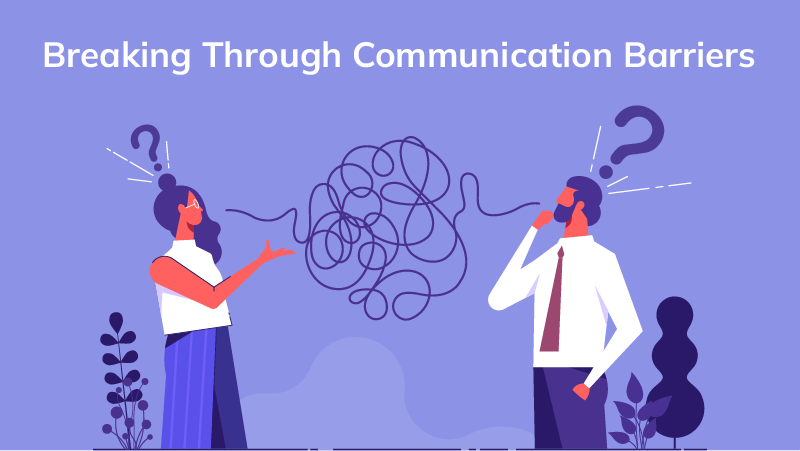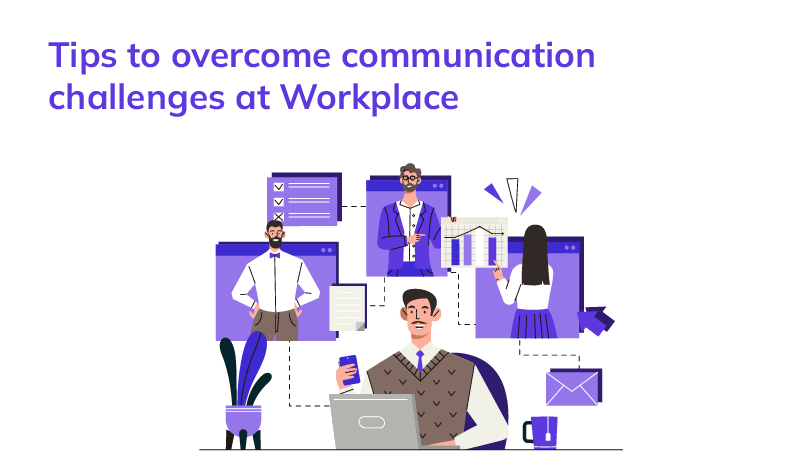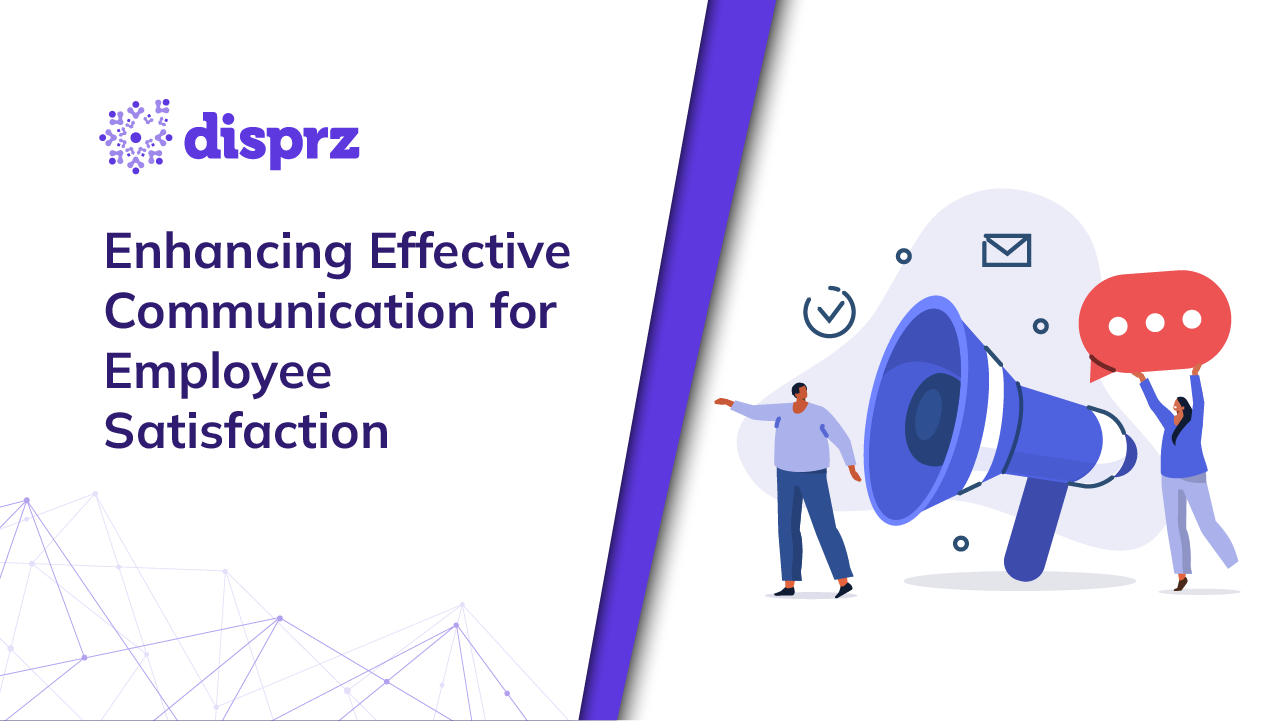To promote a happy workplace and improve employee retention, effective communication is essential. Employees are more likely to be engaged, content, and dedicated to their organization when they feel heard, understood, and informed. Efficient communication plays a crucial role in the overall satisfaction and retention of employees in any organization. It serves as the cornerstone for productive cooperation, effective teamwork, and success. When workers feel appreciated, acknowledged, and understood, they are more engaged and driven to contribute to the success of the organization. According to a survey conducted by Gallup, only 23% of employees worldwide feel engaged in their jobs.
It's common to blame this lack of participation on inadequate communication inside the organization. Additionally, a healthy work environment where employees feel comfortable sharing their ideas, concerns, and comments is fostered by successful communication.
Navigating Organizational Communication by Overcoming Challenges
Despite the importance of efficient interaction, many organizations face challenges in achieving it.
Here are some of the challenges:

Lack of Clear and Consistent Communication Channels is a challenge in many organizations, especially those with remote teams or those that are greater in size, to maintain a positive work environment with clear and consistent communication channels. It might be challenging to guarantee that all the employees receive correct and timely information. Important statements, choices, or updates could be misinterpreted or lost in the process if there are no organized channels. To get past this obstacle, good communication techniques and tools must be used. Organizations must set up channels that enable smooth information flow across teams and departments, whether through recurring team meetings, email updates, project management software, or specialized communication platforms. This plays a crucial role in driving employee retention and fostering higher employee morale by ensuring that internal communication is clear, consistent, and readily accessible.
The use of Jargon and Technical Language is another frequent issue in businesses is the use of jargon or technical language in communication. Some employees might find this terminology difficult to understand, which could cause misunderstandings and confusion. Employee Productivity and effective collaboration are hampered when employees find it difficult to understand industry-specific jargon or specialized terminology. Organizations should encourage communication techniques that use plain language and clarity to overcome this issue. Promoting clear and comprehensible communication among employees improves understanding and coherence amongst heterogeneous teams and departments. Additionally, offering employees training or materials on successful communication can help them improve their language abilities and close the communication gap between technical and non-technical employees.
Communication Barriers like Language, Culture, and Generational Gaps pose a significant obstacle to effective workplace communication. Language barriers can make it more difficult to understand one another and restrict the ideas that employees who speak different languages or dialects can share.
Intercultural teams may have miscommunication or conflict due to cultural differences in communication techniques, conventions, and expectations. Interactions between coworkers from different age groups can also be made more difficult by differences in communication preferences and technological proficiency between generations.
Organizations must support an inclusive culture that values employee input and stimulates higher levels of engagement and satisfaction in order to remove these obstacles. Offering mentorship programs, language assistance, and cross-cultural training can aid in bridging communication gaps and promoting an inclusive workplace. This plays a crucial role in driving employee retention and fostering higher employee morale by ensuring that internal communication is clear, consistent, and readily accessible.
Time Constraints in a Fast-Paced Work Environment for good communication pose a significant challenge for employees. Meaningful interaction and collaboration are sometimes hindered by heavy workloads, tight deadlines, and competing goals.
This could cause people to rush or ignore communication, which could result in messages that are imprecise or incomplete. Organizations must prioritize efficient communication as a vital part of their process in order to meet this challenge in driving employee retention.
Encouragement of time management techniques, realistic expectations, and the development of a positive environment that values candid communication can all assist employees in striking a balance between their workload and maintaining relationships with coworkers. Using technology to automate repetitive chores and expedite communication can also free up time for team members to engage in deeper conversations and exchanges of ideas. Organizations may overcome the hurdles presented by today's fast-paced work culture by recognizing the value of effective interaction and enriching an environment that supports it.
Fostering Strong Communication by Implementing Strategies
By implementing the following solutions, organizations can overcome communication challenges and create a workplace culture that values clarity, inclusivity, and compelling communication.

Establishing clear and consistent communication channels is crucial for overcoming communication challenges within organizations. Leveraging appropriate technology enables team leaders to efficiently reach a broad audience promptly, foster lateral communication, enhance the skillsets of the entire workforce, and utilize comprehensive 360-degree assessment data to monitor and enhance employee performance.
Using clear and concise language by providing platforms with powerful translation tools is a top priority when selecting technology for communication and skill development. In this aspect, Disprz stands out by providing native support for multiple languages and seamless on-the-fly translation capabilities, fostering optimal communication and inclusivity among diverse teams. This guarantees that every team member, no matter where they live, may equally take advantage of possibilities for professional advancement and give your organization their all.
Addressing communication barriers is crucial for promoting diversity and inclusion within organizations. Organizations can disseminate a culture of open communication by recognizing and honoring variations in language, culture, and generational viewpoints. Embracing diversity in communication methods and styles facilitates communication across generational, cultural, and linguistic divides. Developing intercultural awareness and offering language assistance resources can help employees from different backgrounds work together more effectively, thereby improving employee retention and recognizing the role of internal communication in employee satisfaction.
Prioritizing communication and Time Management within organizations requires allocating dedicated time and resources for it. Evaluate the current workloads and tasks. Team leads or department heads play a critical role in ensuring that important tasks align with the overarching objectives of their team. By segregating key tasks and prioritizing them based on their significance and deadlines, leaders can effectively streamline the workflow for their team. This not only helps in maintaining focus on essential goals but also facilitates better coordination and efficiency within the team.
Performance Evaluation and Training to enable the large-scale provision of individualized coaching by using an AI-powered platform to automatically assign learning programs depending on individual performance. By ensuring that each person receives specialized training that is specifically targeted to their individual needs and areas for improvement, this dynamic approach maximizes skill development.
Explore PETRONAS' method of utilizing Disprz LXP to create personalized automated learning paths based on employees' job roles.
Provide performance-based bonuses and incentives to team members to encourage them to continually deliver their best work and increase productivity. By leveraging AI-driven learning solutions such as Disprz to monitor employee performance data, such as Key performance indicators (KPIs), task efficacy, and course completion rates, in great detail. Make use of this information to pinpoint high achievers and put in place a methodical system of rewards that honors and motivates their efforts.
Conclusion
Efficient communication is a key driver in building a strong corporate culture. When communication is transparent, open, and inclusive, it creates a sense of belonging and unity among employees. They feel valued and connected to the organization's mission and goals.
Moreover, organizations should promote a culture of recognition and celebration. Recognizing and appreciating employees' contributions and achievements through regular communication can boost employee morale and motivation. This can be done through public acknowledgments, team meetings, or company-wide announcements.
Prioritizing good communication and building a strong corporate learning culture, organizations can improve employee satisfaction and retention. Employees who feel heard, valued, and supported are more likely to stay with the organization and contribute to its long-term success.








